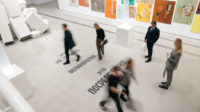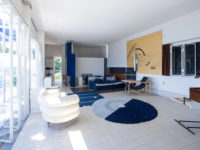Commentary: A Walk in the Park

Today, in Istanbul, we are living at a turning point in Turkey’s history of democratization, and this moment is particularly important for members of the design community. The protests that began here last week grew out of a demonstration against the autocratic and blatantly commercial approach to architecture and public space taken by the ruling AKP (Justice and Development Party) government. The current AKP Prime Minister Recep Tayyip Erdoğan, who was once the Mayor of Istanbul, has decided that he is also the chief architect of the city, making decisions about what types of buildings are constructed (shopping centers and mosques are always top on the agenda) and in what style they should be designed—most often a superficial, neo-Ottoman kitsch.
 |
| Image courtesy İstanbul Büyükşehir Belediyesi A rendering shows a shopping center housed in a recreated Ottoman artillery barracks on Taksim Square. |
Erdoğan’s decision to build a shopping mall on Taksim Square in the fashion of a 19th-century artillery barracks that once stood on the site became a tipping point last week. A peaceful demonstration against the construction of the project—which would transform an important space in the heart of the city with little public input—boiled over into a critique of top-down urban development and then a large-scale political protest.
The original Ottoman barracks building was demolished in 1940 to make way for a redesign of the area by French urban planner and architect Henri Prost. The Prost plan called for a large open plaza with an opera house, sports facilities, and what is now Gezi Park just north of Taksim Square. Throughout the 20th century, the surrounding districts developed into the cultural, leisure, and tourist center of the city and a symbol of modern Istanbul. The Skidmore, Owings & Merrill-designed Istanbul Hilton hotel was built nearby in 1954. Directly adjacent to the square, the Atatürk Kültür Merkezi opera house by Hayati Tabanlıoğlu was completed in 1969. The neighboring Beyoğlu section grew into the city’s nightlife center. All the while, Gezi Park remained the only significant green space in the area.
Beginning in the 1990s, conservative Islamic politicians of various stripes have repeatedly called for a large mosque to be built in Taksim Square as a religious counterpoint to the district’s Modernist character. During the last general election, Erdoğan offered his own plan for the area. One of what he calls his “crazy projects,” the scheme centered on the zombie-like resurrection of the artillery barracks as a shopping center and the razing of Gezi Park.
When that plan met legal and public resistance, the city revised it, burying a major avenue that runs next to the square underground and keeping the park largely intact. But last week, the removal of trees and a stone wall from Gezi sparked a protest against the project that galvanized into a larger reaction to Erdoğan and the AKP’s one-sided attitude toward urbanism in Istanbul. Many residents, including a large number of young people, took to the streets to vocally reject an approach to the city that would destroy a park in favor of a shopping mall. Their peaceful sit-in in Gezi Park was met with tear gas and police violence.
The back and forth that ensued—and in which I participated—culminated with the police’s retreat from the park on Saturday, allowing it to be reclaimed by thousands of people. Over the past few days, Gezi has become the site of an Occupy Wall Street-style protest, a quasi utopian city in itself and an experiment in communal and participatory urbanism. The park is currently a campsite with its own market, kitchen, and clinic, as well as platforms for political discussion and performances.
The encampment’s democratic and utopian spirit stands in contrast to the self-serving urban policies of the AKP government. With a collection of affiliated real estate developers, contractors, and architects, the AKP has set about creating a neo-Ottoman Las Vegas in this 6000-year-old city. Lacking any meaningful architectural strategies, their bald commercialism has used the signs and symbols of the defunct Ottoman Empire as the shallow basis for this effort. Furthermore, the present government has not justified how these public properties can—as has frequently happened—be handed off to commercial interests without any debate or oversight.
For people in Istanbul, the lack of public input into Erdoğan’s building projects, has become emblematic of larger frustrations with the government. The discussion about democracy and development that it raises has implications not only for Turkey’s future but for the future of urban centers throughout the region.
Gökhan Karakuş is an Istanbul-based designer and critic. He is the founder and director of Emedya Design, an interactive and environmental design studio, and a contributor to Detail, The Architect’s Journal, Dwell, and Bauwelt, among other publications. He is also a co-curator of The Performance of Modernity: Atatürk Kültür Merkezi, 1946-1977, a recent exhibition about the opera house on Taksim Square. He Tweets at @gokhankarakus.


